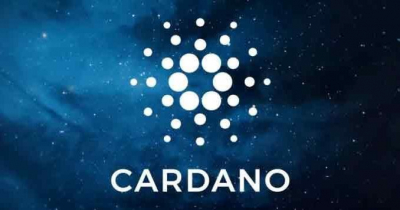Legacy of Satoshi
Satoshi Nakamoto is a famous pseudonym of a man or a team that put together and launched Bitcoin in 2009. Satoshi quietly abandoned the community and left behind a few other things. Besides the running Bitcoin network, we can read about the reasons why Satoshi created Bitcoin and what is the mission of the project. In the beginning, the mission was clear and Bitcoin was a means on how to reach the goal. We can read about the Bitcoin mission in the white paper or Bitcoin-Talk. The mission, that was envisioned by Satoshi, and the reality might not be fully in conformity. Why? There are several reasons for that.
- Satoshi left and thus he cannot drive the adoption and keep the mission on track. The project has no leader and the role was taken by several self-appointed people. A group of new influential leaders might pursue their interests and goals which might be different from what Satoshi wanted. They can express their opinions that might be in direct contrast with Satoshi’s vision. Who are these people? It can be nearly everybody. Members of the core team, YouTubers, rich investors, publishers, people that are active on social media.
- Satoshi’s mission can be understood differently. Influencers can interpret it to other people differently and it might cause confusion or even disagreements. As a consequence, we could see a split of the chain into two chains. Bitcoin and Bitcoin Cash. It would probably never happen if Satoshi showed the right direction. We can observe disagreements not only on the protocol level but also on the mission level. For example, communities discuss whether Bitcoin failed if it is not used as digital cash. The narrative about a digital store of value prevails but Satoshi did not mention that in the white paper. Can it be considered a failure? The white paper is obsolete and there is nobody who would rewrite it or show a new direction. Is it an advantage or disadvantage? Is the current evolution the best for the future of Bitcoin?
- Price speculation is the main driver of adoption. It is not the mission of the project any longer. Bitcoin attracted banks and funds that buy Bitcoin for their customers. Some big companies decided to buy Bitcoin. It attracts retail investors to jump on the wave and earn some money. It is both good or bad. It is definitely very positive for the adoption of Bitcoin. On the other hand, it can be perceived positively only in the case that buyers will follow Satoshi’s vision. Users must be able to use cryptocurrencies as an alternative that allows them to get rid of bank accounts.
Price speculation is not the legacy of Satoshi. Satoshi stopped trusting central and commercial banks. Let’s have a look at Satoshi’s vision and try to compare it with the nowaday’s reality. The very first sentence of Satoshi’s white-paper is this.
“A purely peer-to-peer version of electronic cash would allow online payments to be sent directly from one party to another without going through a financial institution.”
Satoshi wanted to build a system that will be able to process payments without the involvement of other financial institutions or third parties. This is mainly about the capabilities of the transaction system. Satoshi obviously perceived Bitcoin as a competitor to Internet banking. It can be said that it is the ultimate mission of Bitcoin. From other texts, we can see that Satoshi also considered central banks as untrusted third parties.
“The root problem with conventional currency is all the trust that’s required to make it work. The central bank must be trusted not to debase the currency, but the history of fiat currencies is full of breaches of that trust. Banks must be trusted to hold our money and transfer it electronically, but they lend it out in waves of credit bubbles with barely a fraction in reserve. We have to trust them with our privacy, trust them not to let identity thieves drain our accounts.”
Besides peer-to-peer payments, Satoshi also wanted to create sound money. Regarding privacy, the reality is that the majority of people buy cryptocurrencies on centralized exchanges and are willing to provide KYC/AML data. They are willing to pay fees to centralized services. The majority of Bitcoin holders still use bank accounts and thus, basically support the existence of the traditional financial system. People do not care about privacy. Regulators and not going to ban cryptocurrencies. They are going to regulate them and make it harder to own them without providing KYC/AML. People love stacking Sats but are not willing to get rid of bank accounts. The majority of people basically speculate on the rise of the price.
“Bitcoin is a digital currency using cryptography and a distributed network to replace the need for a trusted central server. Escape the arbitrary inflation risk of centrally managed currencies! Bitcoin’s total circulation is limited to 21 million coins. The coins are gradually released to the network’s nodes based on the CPU power they contribute, so you can get a share of them by contributing your idle CPU time.”
It is probably the explanation why centralized exchanges have found such a good business. People are not able to earn bitcoins by mining. Mining is a big business nowadays available only for big investors that are located in countries with cheap electricity. As a side effect, people are not able to mine and thus they are not able to vote about changes to the protocol. Thus, owners of mining halls have the most rights in the ecosystem and they will not obviously vote for changes that would go against their economic interests.
“ When that runs out [network subsidy decreasing by halving], the system can support transaction fees if needed. It’s based on open market competition, and there will probably always be nodes willing to process transactions for free.”
Satoshi cared about the transaction fees. He probably knew transaction fees will play a major role regarding the security budget. On the other hand, he expected that it would be possible to send transactions for free. The reality is that major PoW networks Bitcoin and Ethereum are often clogged. Pool operators select transactions based on the size of fees. Thus, transaction fees rise and currently, you need to pay a few tens of dollars to be able to transact. There are only a few major pool operators in the Bitcoin ecosystem and none of them is willing to insert transactions to a new block if they have zero fees.
Satoshi was aware of the fact that it is difficult to establish trust between seller and buyer on the internet. Satoshi obviously did not want to rely on the current authorities to resolve disputes and wanted to create a digital mechanism that would be able to substitute authorities. Many Bitcoiners can be surprised by the fact that Satoshi wanted to create something like smart contracts. We know that tokens and smart contracts can significantly help with establishing trust between sellers and buyers. Let’s have a look at what Satoshi wrote.
“ Here’s an outline of the kind of escrow transaction that’s possible in software. This is not implemented and I probably won’t have time to implement it soon, but just to let you know what’s possible.
The basic escrow: The buyer commits a payment to escrow. The seller receives a transaction with the money in escrow, but he can’t spend it until the buyer unlocks it. The buyer can release the payment at any time after that, which could be never. This does not allow the buyer to take the money back, but it does give him the option to burn the money out of spite by never releasing it. The seller has the option to release the money back to the buyer.
While this system does not guarantee the parties against loss, it takes the profit out of cheating.
If the seller doesn’t send the goods, he doesn’t get paid. The buyer would still be out the money, but at least the seller has no monetary motivation to stiff him.
The buyer can’t benefit by failing to pay. He can’t get the escrow money back. He can’t fail to pay due to lack of funds. The seller can see that the funds are committed to his key and can’t be sent to anyone else.”
Can we say that Bitcoin failed since so many ideals that Satoshi envisioned are not fulfilled? We definitely could but it would not be fair. Every revolutionary change needs its time and it is hard to predict which direction evolution takes. Satoshi could not predict how fast the adoption will be or how fast the infrastructure will be built. Is the current tempo slow or fast? We can just speculate since Satoshi will not tell us more about that. We can compare the vision and the reality and judge it. We can even try to find the reasons why the reality is as it is. Then, we can try to think about ways on how to reach Satoshi’s vision.
Bitcoin maximalism
Bitcoin maximalism does not belong to Satoshi’s legacy. Bitcoin maximalism appeared somewhere in 2014 and completely twisted Satoshi’s vision. It was the reaction of new Bitcoin heroes to the appearance of alternative projects. They completely refuse alternatives and do not consider them as viable. Often without obvious reasons. It must be noted that it was not Satoshi who refused alternatives. Nowadays, alternatives can be closer to Satoshi’s vision than Bitcoin itself. Cardano definitely belongs to that category. If Satoshi could say something about Cardano we believe that it would be very positive. Do you think we are not right? Well, it might be that we understand Satoshi’s vision differently than you.
Many people would argue that Satoshi’s vision is directly linked to Bitcoin and it is not possible to separate them. We do not think so. We know the history of money and we know how it evolved. A quick overview would look like this: barter system, shells, minted coins, gold standard, fiat money (banknotes), internet banking (plastic money), cryptocurrency. It is naive to think that evolution can stop. Evolution will naturally continue. At the moment, we are definitely not in the cryptocurrency stage yet. The adoption is too low and the majority of people use fiat money. Bitcoin started the revolution of cryptocurrencies but it does not mean that it will be the only winner. The readiness for mass adoption, ability to become a real usable alternative to fiat money, adoption, and many other factors will decide about the future.
Let’s provide an analogy that will explain what we mean. The development of cars started as early as the 17th century with the invention of the first steam-powered vehicle, which led to the creation of the first steam-powered automobile capable of human transportation, built by Nicolas-Joseph Cugnot in 1769. On January 29, 1886, Carl Benz applied for a patent for his “vehicle powered by a gas engine”. It is regarded as the birth year of modern cars. Who knows the first engineers of cars? Who knows what the first car looks like? Which car would you like to have? An old one or rather a newer one? The reality is that the majority of people would rather use the modern car with low consumption, fast, reliable, secure, and nice-looking. Is it fair to compare cars with money? Let’s put aside the debate about government and non-government money. Modern money, including cryptocurrencies, is about technology.
Bitcoin is not gold. Gold would become beautiful sound money but the days when it would be possible are passed. Modern society needs to have everything on the Internet. Bitcoin is a network protocol. It is a piece of software. The source code of open cryptocurrencies itself has probably no value. You can download it for free. The only valuable thing about Bitcoin is trust and adoption. This is reflected by market capitalization.
Satoshi had a vision but it does not mean that Bitcoin will be the only implementation of that vision. It is the same as with cars. You can choose the best car for you and you do not need to care about who has invented the first car. Cryptocurrencies are not dependent on governments. Nobody will tell you that you need to use a particular cryptocurrency. How can we know whether there will be only one cryptocurrency for the whole world? How can we know whether everybody will want to use the PoW network if they can use the PoS network? It will be about personal preferences and the vast majority of the population has not yet chosen. Everything is still ahead of us.
How Cardano can achieve Satoshi’s vision
In the first place, Satoshi’s vision is mainly about technology. When Bitcoin was launched, bank fees were high and it was a very long process to send money to the other part of the world. It has changed. In many countries, bank fees are close to zero, and settlement time has also improved. Now, we can say that the fees of Bitcoin transactions are more expensive than Bank fees. At the time of writing, it is recommended to set a $20 fee. It was $30 a few days ago. Hard to say, how much it will be next week. As the network can get clogged relatively quickly, it is usual that settlement can take hours or even a few days. Newcomers are confused and surprised that they had to pay such a lot of money for a transaction and it takes so much time. This is not technology that is close to Satoshi’s vision. The Bitcoin network is basically unusable for anything else than buying and holding bitcoins. For another usage including payments, third parties are necessary. It is a sad reality and it makes no sense to claim that it is ok.
At the time of writing, Cardano has surpassed Bitcoin in many aspects. Block time of Bitcoin is set to 10 minutes. Cardano is able to create a new block every 20 seconds. If you explore Cardano blocks you can find those transaction fees are usually set from 0,16 to 0,20 ADA. It is approximately $0,20. Transaction fees rise when the network does not manage to insert all available transactions into a block. Thus, they are put aside to be processed a bit later. It can happen that more and more transactions are put aside when the demand for sending transactions grows. We are talking about scalability. Bitcoin is not able to process more than 10 transactions per second. Cardano is able to process a few hundred transactions per second. Moreover, Ouroboros PoS will be improved in the future so we can imagine numbers around a few thousand per second. Decentralization of Bitcoin stands on ten major pools and a few marginal ones. You can find over 2200 registered pools in the Cardano network. Approximately 1000 pools regularly produce blocks. You can find entities that own more pools but still, the number of independent entities is higher than what we can observe in the Bitcoin network. At the time of writing, the Binance exchange operates with 13,2 % of the hash-rate in the Bitcoin ecosystem. In the Cardano ecosystem, the stake of Binance is 12,4 %. 22 % of the stake is owned by single pool operators. Comparing the energy consumption, Cardano needs 6 GWh while Bitcoin needs 45 TWh. It is expected that with the rising price of bitcoins the energy consumption could reach 128 TWh at the end of 2021.
From Satoshi’s vision perspective, Cardano is a more suitable network for mass adoption than Bitcoin. Cardano can process more transactions than Bitcoin, faster, cheaply, in a more decentralized way and it consumes significantly less energy. Bitcoin has been running for over a decade. Thus, we know that the PoW consensus mechanism is secure. As the current leader, Bitcoin has the biggest network effect. Demand for bitcoins is also significant. These are the only advantages of Bitcoin. Cardano will need a few years to persuade people that Ouroboros PoS is a viable and secure consensus mechanism. Higher adoption is also only a matter of time. The Cardano Shelley main-net will celebrate one year of existence in 2021. In a few years, Cardano can have more users than Bitcoin. We mean users that will send transactions on a daily basis, not holders of coins that make a single transaction per month.
So far, we have compared transaction networks of Cardano and Bitcoin. As we have mentioned above, Satoshi was aware of the inability of Bitcoin to establish trust between seller and buyer on the Internet. Satoshi did not have enough time to come up with a solution. The IOHK team researched smart contracts well and Cardano will be well prepared for establishing trust on the Internet. People will be able to change the value on the internet without the need to ask authorities for help when it comes to disputes between participants.
Satoshi often wrote about third parties in the context of monetary policy and privacy that is directly linked to the daily usage of money. The world of the internet is full of middlemen that misuse their positions. We can find them not only in the financial sector but also in the social media and business sectors. We could be even more dare and say that governments are also groups of people that can be considered as middlemen. People are generally losing trust in middlemen. It does not matter whether we talk about central banks, payment networks, the lending industry, or big IT giants.
Smart contracts can be the tool that will allow substitute middlemen in many places. It will not happen without the adoption of new decentralized services. One thing is to have the appropriate tool to facilitate changes in society. The other thing is whether society will be interested. It does not matter whether we talk about Bitcoin, Cardano, or anything else. Society will decide about its future.
Only people can decide about a future
Fulfilling Satoshi’s vision is not only about technology. Technology itself cannot influence the adoption. Protocols can only directly economically motivate miners or stake-holders to maintain the network. Bitcoin and Cardano protocols are only technical implementations of the vision. The vision is a goal and the goal can be reached via many paths. The biggest challenge of cryptocurrencies as an industry is adoption. There is no way on how to make a revolution without the active participation of people. People must choose a path and it is the only way how the goal can be reached. In our case, people can reach the same goal via different protocols.
The perception of cryptocurrencies is broad. It begins by scam or Ponzi scheme, continues by trading or speculative opportunities, transfer of value and utility, by the store of value or a new form of money, and ends by the new paradigm of new forms of governments. Even if we have reached a certain level of adoption, it cannot be said that every crypto-asset holder believes that we are at the beginning of a new era. It must be changed and it can happen only via public education, awareness about the potential of cryptocurrencies, and adoption. People need to install wallets and begin to send transactions. It is the necessary prerequisite.
Cryptocurrency must be a viable and reliable substitution for the traditional banking system. People must be able to get rid of a bank account and migrate to the blockchain. We are not yet there technologically but we need to continue with innovations. The real adoption of cryptocurrencies should be counted by the number of people that fully migrated to the blockchain. All other metrics are meaningless. Only people can decide whether they want to migrate to blockchain technologies. Protocols do not care about the decisions of people. Individuals will not do it if they feel they are alone. Crypto communities will be key drivers of adoption.
Bottom-up adoption requires strong communities that will help newcomers to understand the mission of a given project and help to overcome technical difficulties. Qualities of communities will directly influence the tempo of adoption. Cryptocurrencies are open ecosystems. Everybody can freely join or leave. It has many positives, but also a few negatives. New leaders will arise and their personalities and abilities will determine the destinies of communities. There might be global leaders and many other local leaders. Maybe a leader is not the appropriate word at the moment. They are members of core development teams, miners and pool operators, stake-holders, YouTubers, people active on Twitter, Facebook admins, famous faces that speak about cryptocurrencies.
In the case of Cardano, Charles Hoskinson is definitely a very influential person. However, he is not the only one. You can find many Cardano ambassadors that help with adoption via the creation of educational content and building communities. Project Catalyst is the way how stake-holders can decide about the projects that will be funded from the project treasury. IOHK, Cardano Foundation, and Emurgo are entities that can help with adoption on the business and government levels.
Bitcoin does not have a single obvious leader like Charles Hoskinson but it does not mean that none does exist. We have tried to google the most influential Bitcoin influencers and to our surprise, they are not often directly linked to Bitcoin. Very often, crypto influencers are leaders of other projects. To name a few influencers by the number of followers on Twitter in 2020, you can find these people: Justin Sun, John McAfee, Vitalik Buterin, Charlie Lee, Marc Andreessen, Roger Ver, Andreas Antonopoulos, Brian Armstrong, Anthony Pompliano, Nick Szabo, Max Keiser, Jameson Lopp, Tone Vays, Adam Back, Gavin Andersen, Michael Novogratz, etc.
Besides others, you can find these people in the list of recommended Bitcoin and crypto influencers: Anthony Pompliano, Erik Voorhees, CryptoCobain, Ty Daniel Smith, Girl Gone Crypto, David Gokhshtein, Ivan on Tech, BitBoy Crypto, Dan Held, Peter McCormack.
Every Bitcoiner can pick their own hero. The problem is that newcomers can find so many influencers and they have different opinions. You can find traders, toxic bitcoin maximalists, crypto opportunists, and others. None of them is Satoshi Nakamoto and none of them is able to interpret Satoshi’s vision to people. Maybe Andreas Antonopoulos could do that in the best way but the Bitcoin community has rejected him since he started to be interested in Ethereum. As a result, members of the crypto community do not have a focus on the mission. It is not necessary for all members to have the same opinion. On the other hand, members should understand the vision and help to achieve it.
As we said, we do not think that Bitcoin maximalism belongs to Satoshi’s legacy. Unfortunately, maximalism is slowly spreading in the communities and we do not think that it is healthy. Some people like it, some not. Bitcoin maximalism is like a new form of religion and no religion has global dominance. Maximalism of any form will always be only for minorities. Bitcoin maximalists basically refuse all other paths that lead to Satoshi’s vision. It is simply a very stupid approach.
Money is not religion. Money is means of exchange, units of account, and a store of value. We use fiat money that is linked with the states in which we live. In many countries, it has nothing to do with religion. It has many to do with governments, social structures, and politics. Cryptocurrencies can be perceived as a technological revolution in the world of finance that has the potential to disrupt governments. It is very naive to think that we can disrupt the world of finance via maximalism. The majority of the population would simply reject it. We need a pragmatic approach and appropriate technological solutions.
People will be an inevitable part of the cryptocurrency revolution. Only people can decide whether cryptocurrencies will be only speculative assets or whether they can bring us a significant change in society. We have probably reached the point where crypto-assets are considered as speculative assets or maybe a hedge against the system. It can remain like this forever. Satoshi’s vision is still far away. To make another step is much more difficult than people think. Only people’s desire for change can get us closer and for that, we need healthy communities and maybe appropriate leaders.
Conclusion
Society loses trust in institutions and money. Blockchain, as a trust machine, can be a remedy. However, it will not happen somehow accidentally. Disruption does not mean that we need to destroy the current structures and completely replace them. Maybe it will be sufficient to modernize them. Fiat money will probably stay here but it is not an obstacle. Decentralization is an alternative and people will decide whether they utilize it or not and also how they utilize it.
Satoshi’s vision is about decentralization and innovations in this area. We definitely need more scalable protocols and we also need smart contracts. At least, Satoshi thought that it was needed and possible to achieve. Cardano can realize Satoshi’s vision. ADA can even be sound money. No government can decide about it. Satoshi will not tell us. It is about the individual decision of every person on the planet.

 Your very first article about Cardano
Your very first article about Cardano Is Cardano the biggest innovation after the Internet?
Is Cardano the biggest innovation after the Internet? Let's talk about the realistic market capitalization of Cardano
Let's talk about the realistic market capitalization of Cardano The Challenges of Decentralization for Cardano
The Challenges of Decentralization for Cardano